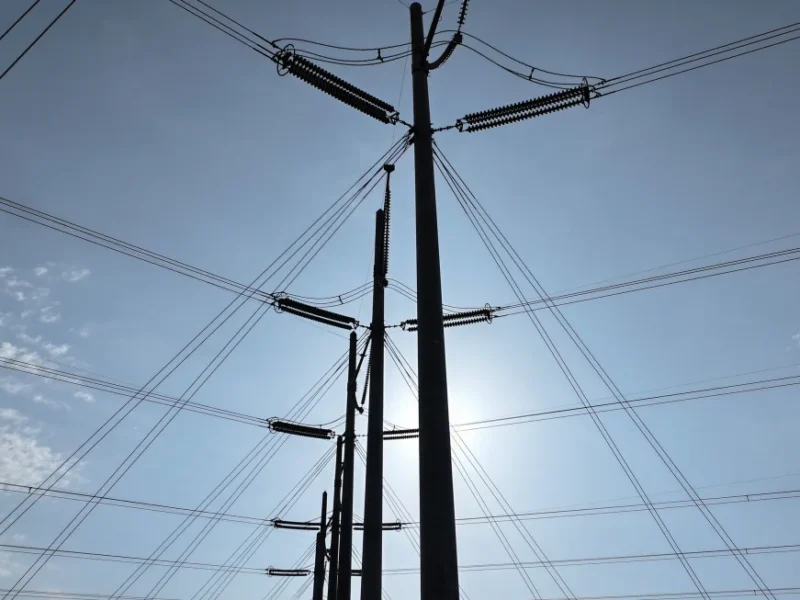For the past twenty years, more efficient energy generation has balanced out small increases in America’s energy demand. However, the era of steady electricity consumption is ending. McKinsey, Boston Consulting Group, and S&P Global predict that US power demand will grow between 13% and 15% annually for the rest of the decade. This growth rate is unprecedented and surpasses the capacity of US electricity generators.
One major factor driving this surge in power demand is artificial intelligence.
Most people don’t think of computers as particularly energy-intensive beyond charging their laptops. However, when you enter a prompt into ChatGPT or another large language model, your request is processed in a data center far away, requiring significant power. Training these models is also energy-intensive: vast amounts of data from web pages, Wikipedia, Reddit, and transcribed YouTube videos are fed into these AI models. To process this data, hundreds of graphics processing units (GPUs), which perform rapid mathematical calculations, run continuously for thousands of hours. This process demands gigawatts of electricity, making previous data center usage seem modest.
This situation is further complicated by a national effort to decarbonize, which involves shifting many energy consumption sources—such as vehicles, heating, and manufacturing (boosted by the CHIPS and Science Act and Inflation Reduction Act)—to an electric grid powered by clean energy sources. As AI’s demand on the grid rises and as more cars and industries shift to electric power, a significant portion of US electricity generators must remain operational around the clock, leading to higher prices.
Since energy demand fluctuates throughout the day and year, the grid needs to provide a flexible supply, ramping up when people are home in the evening and when temperatures spike, increasing air-conditioning use. Most daily energy generation is inexpensive, around $30 per megawatt. However, when demand exceeds the supply from base power plants, utilities activate peaker plants, which are designed to ramp up quickly but generate power at a high cost, about $1,000 per megawatt. As consistently higher electricity demand keeps these expensive plants running more often, costs for households, schools, and hospitals will rise significantly. A 15% increase in electricity demand doesn’t lead to a 15% price increase; instead, it results in exponential cost increases as utilities rely more on high-cost peaker plants. This means a doubling of home energy prices is a real possibility. Additionally, if the grid operates at full capacity just to keep up, taking dirtier energy sources offline becomes unjustifiable, delaying climate goals.
Within the next decade, we may face a grid infrastructure that can’t keep up with rapidly rising demand, even with all sources running nonstop. This could lead to an unreliable energy grid with blackouts and rolling brownouts, reminiscent of the Texas blackouts in winter 2021 and the 2003 East Coast blackout affecting 50 million people. However, this time it won’t be due to extreme weather or a safety incident but rather a standard part of life as the grid struggles to add capacity.
The Biden administration recently launched the Federal-State Modern Grid Deployment Initiative, highlighting the growing vulnerability and insufficiency of the national grid. While the problem diagnosis is accurate, the initiative’s focus on enhancing existing infrastructure with grid-enhancing technologies and the lack of major plans to expedite and fund new energy infrastructure don’t address the scale of the challenge.
Moreover, the approval time for new power generation connections to transmission networks has reached five years, partly due to insufficient transmission capacity. Currently, states through which a power transmission line runs must approve it, a process involving consultations with property owners and considerations of economic, environmental, safety, historical preservation, and engineering concerns, making it cumbersome. A truly national grid requires a single federal oversight body. This is proposed in the Streamlining Interstate Transmission of Electricity (SITE) Act. Combined with a nationwide push to build and finance new electricity generation and transmission on the scale of New Deal era construction, this approach is needed to meet the energy demands of an AI-powered, green economy.
America’s ability to lead in AI, decarbonization, chip manufacturing, and electric vehicles depends on abundant electricity. However, even an AI chatbot can’t overcome the bureaucratic hurdles impeding grid upgrades. For that, we need policies aimed at rapidly building and bringing new power generation online.











